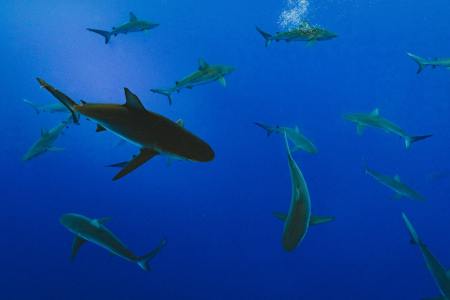If you swam or engaged in another aquatic activity off the coast of California in recent news, a recently-published scientific study has some news for you: you might have been significantly closer to a great white shark than you’d expected. Thankfully, the study has another bit of news that’s less worrisome: you were almost certainly in no more danger from the shark that was there than from the shark you didn’t think was there.
The journal Plos One recently published a study titled “Patterns of overlapping habitat use of juvenile white shark and human recreational water users along southern California beaches.” Among the authors is Christopher Lowe, the head of Cal State Long Beach’s Shark Lab. As Dr. Lowe told the Los Angeles Times, “This study may change people’s perception of the risk sharks pose to people that share the ocean with them.”
The study used aerial drones to monitor 26 sites along the coastline between 2019 and 2021. All told, the scientists made 1,644 surveys of the region. The study focused on juvenile sharks, with the vast majority of sightings taking place at Carpinteria and Del Mar Beach.
As for the level of danger — or lack thereof — the study’s authors write that their work “provides evidence that high human-shark spatio-temporal overlap does not lead to an increased bite frequency in southern California.”
Something Killed Off Most of the Planet’s Sharks 19 Million Years Ago
This is absolutely going to inspire a bunch of horror moviesThe scientists’ observations bore out the notion that the sharks’ presence was less ominous than you might think. “Most of the time water users didn’t even know the sharks were there, but we could easily see them from the air,” Shark Lab’s Patrick Rex — another of the paper’s authors — told the Los Angeles Times.
It’s encouraging news — and, perhaps, one less thing to worry about at a time when worrying things abound.
Thanks for reading InsideHook. Sign up for our daily newsletter and be in the know.


















